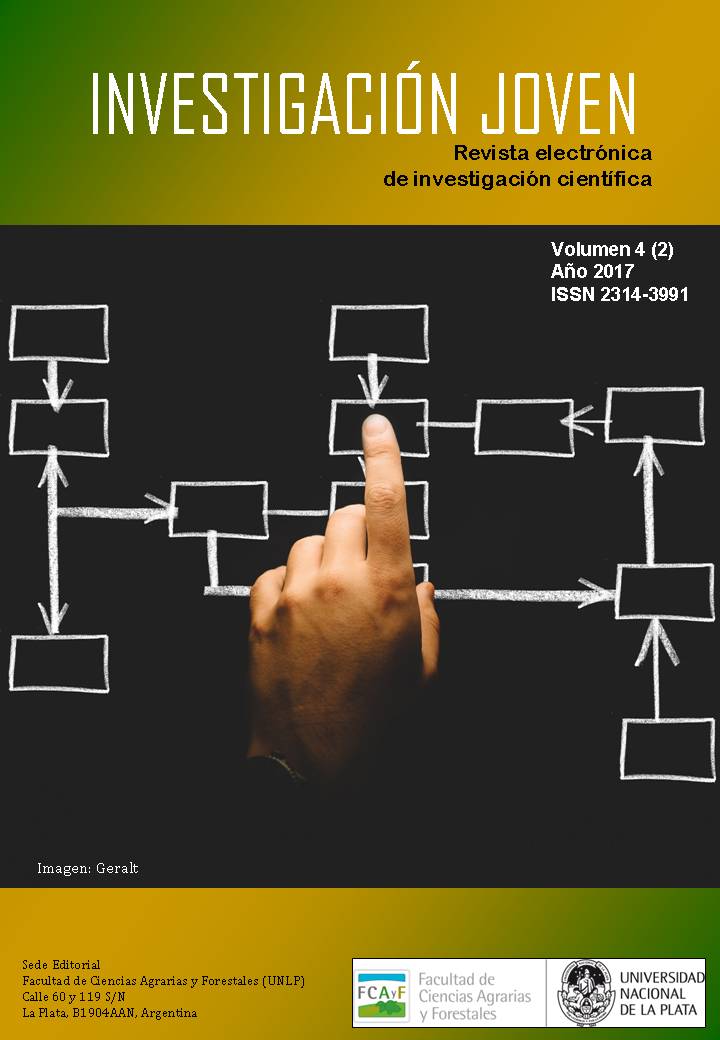NITROGEN AND THE PUNISHMENT OF TÁNTALO
Keywords:
Biological nitrogen fixation, Legumes, RhizobiaAbstract
The food of half of the world's population, about 3.7 billion people, depends directly on the production of synthetic fertilizers. These chemicals provide the soil with the amount of nitrogen needed for crops to reach the levels of production required to feed the world. We have reached a degree of dependence that, without fertilizers, half the planet would not have to eat. The consumption of these compounds already exceeds 100 million tons per year and the consequences of this excess are generating diverse and serious environmental problems, making of modern agriculture an unsustainable practice. In this context, leguminous plants (peanut, peanuts, peas, soybeans, alfalfa, etc.) take a leading role in agriculture, as they are able to obtain nitrogen through an elegant biological mechanism known as nitrogen fixing symbiosis, making unnecessary the use of fertilizers for their growth. For this reason, the United Nations has proclaimed 2016 as the International Year of Legumes (http://www.fao.org/pulses-2016/en/). The present article aims to publicize the importance of this initiative through a historical view of the nitrogen problem in agriculture, taking as a central axis the biological nitrogen fixation.
Downloads
References
[2] J. N. Galloway, A. M. Leach, A. Bleeker & J. W. Erisman. “A chronology of human understanding of the nitrogen cycle”. Philos. Trans. R. Soc. Lond. B. Biol. Sci., 368, 2013. http://rstb.royalsocietypublishing.org/content/368/1621/20130120
[3] R. L. Berendsen, C. M. J. Pieterse & P. A. H. M Bakker, “The rhizosphere microbiome and plant health”. Trends Plant Sci., 17, 2012, 478–486. http://www.cell.com/trends/plant-science/fulltext/S1360-1385(12)00079-9
[4] G. E. D. Oldroyd, “Speak, friend, and enter: signalling systems that promote beneficial symbiotic associations in plants”. Nat. Rev. Microbiol.,11, 2013, 252–263. https://www.nature.com/nrmicro/journal/v11/n4/full/nrmicro2990.html
[5] E. Galeano, 1971, Las venas abiertas de América Latina, Uruguay, Monthly Review.
[6] J. W. Erisman, M. A. Sutton, J. Galloway, Z. Klimont & W. Winiwarter, “How a century of ammonia synthesis changed the world”. Nat. Geosci., 1, 2008, 636–639. http://www.nature.com/ngeo/journal/v1/n10/abs/ngeo325.html
[7] D. Fowler, M. Coyle, U. Skiba, M. A. Sutton, J. N. Cape, S. Reis, L. J. Sheppard, A. Jenkins, B. Grizzetti, J. N. Galloway, P. Vitousek, A. Leach, A. F. Bouwman, K. Butterbach-Bahl, F. Dentener, D. Stevenson, M. Amann, M. Voss, “The global nitrogen cycle in the twenty-first century”, 368, 2013. http://rstb.royalsocietypublishing.org/content/368/1621/20130164
[8] D. S. Reay, E. A. Davidson, K. A. Smith, P. Smith, J. M. Melillo, F. Dentener & P. J. Crutzen “Global agriculture and nitrous oxide emissions”, Nat. Clim. Chang., 2, 2012, 410–416. http://www.nature.com/nclimate/journal/v2/n6/full/nclimate1458.html
[9] M. A. Sutton & A. Bleeker, “Environmental science: The shape of nitrogen to come”, Nature. 494, 2013, 8–10. http://www.nature.com/nature/journal/v494/n7438/full/nature11954.html
[10] C. H. Foyer, “Neglecting legumes has compromised human health and sustainable food production”, Nature Plants. 2, 2016, 1–10 (2016). https://www.nature.com/articles/nplants2016112
[11] G. E. Oldroyd & R. Dixon, “Biotechnological solutions to the nitrogen problem”, Curr. Opin. Biotechnol. 26, 2014, 9–24. http://www.sciencedirect.com/science/article/pii/S0958166913006307
[12] R. Graves, 1955, Los mitos griegos, España, Alianza editorial.
















